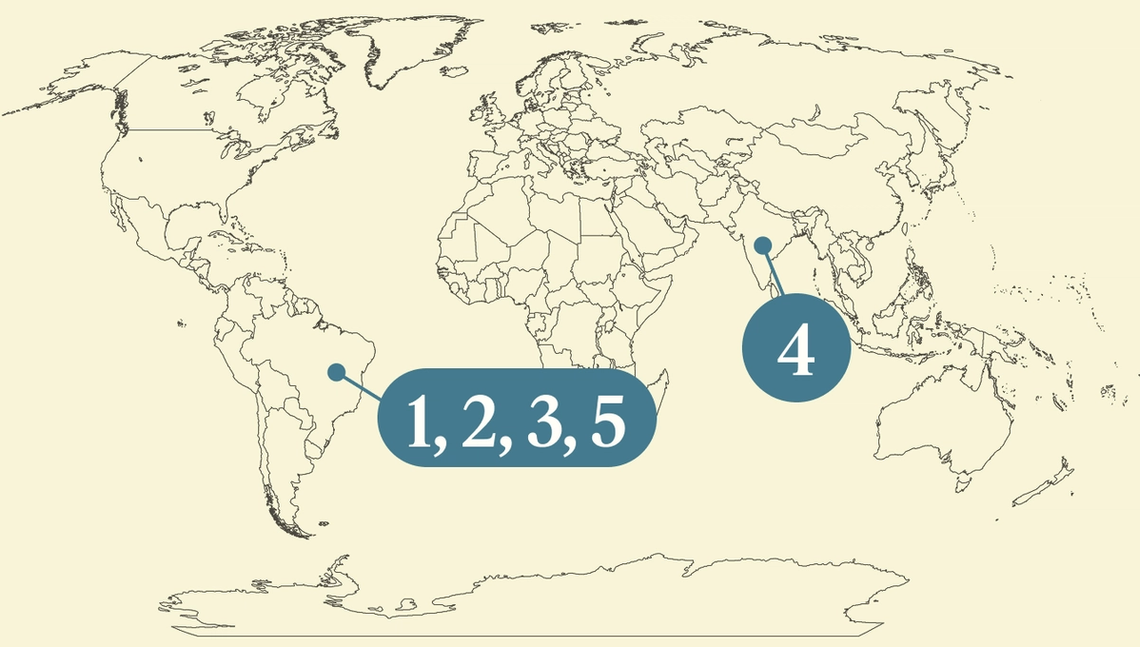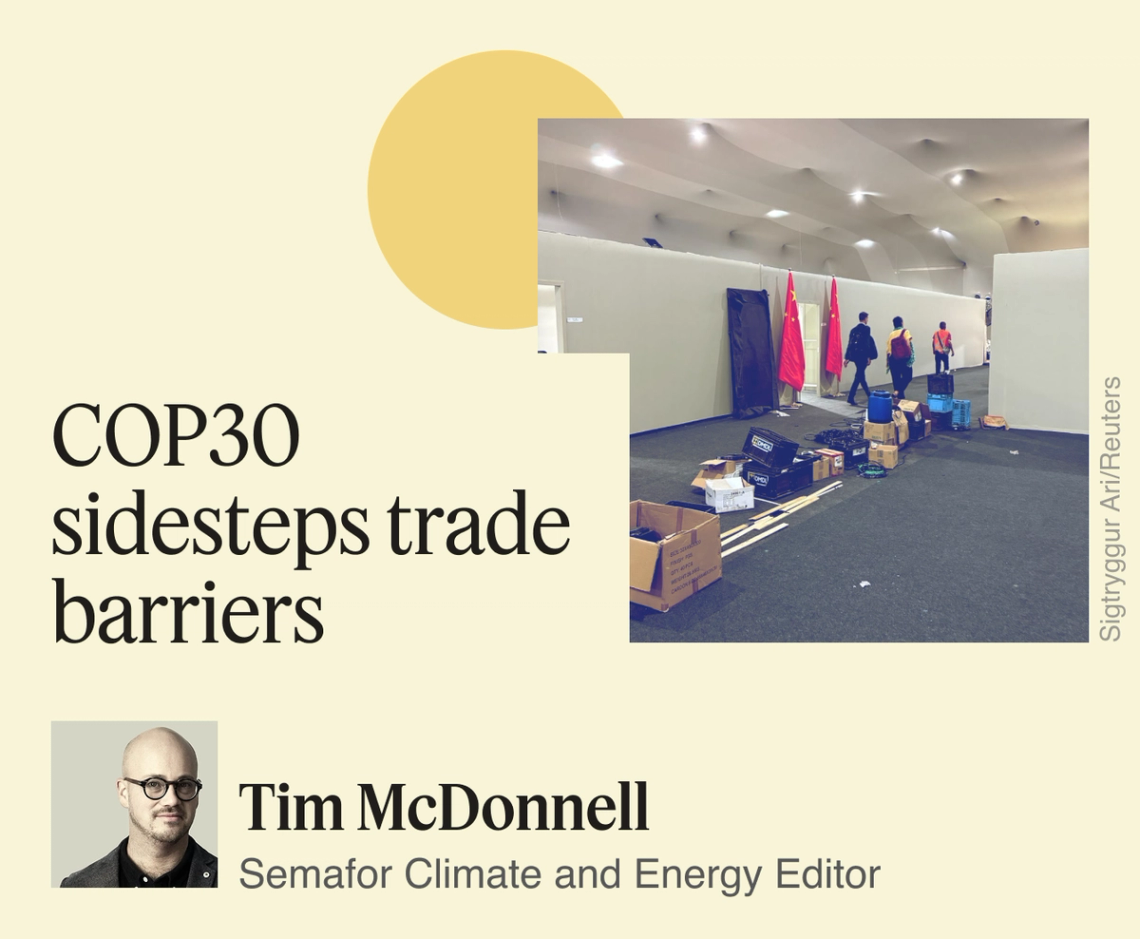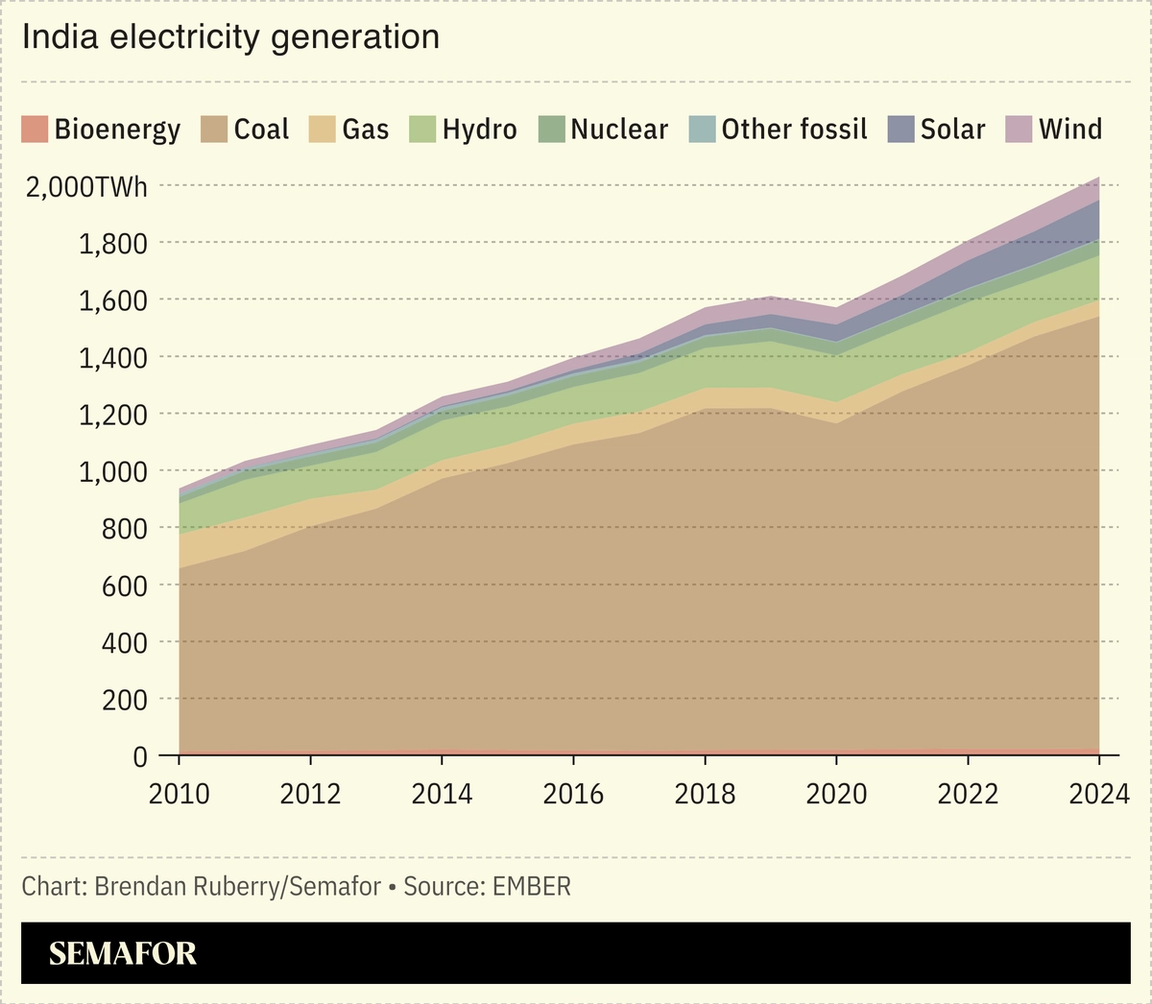| | The global carbon market envisaged by the Paris Agreement is losing steam.͏ ͏ ͏ ͏ ͏ ͏ |
| |  | Energy |  |
| |
|
 - COP30’s carbon problem
- Forest funding
- China’s emissions flat
- Grids fall behind
- Emerging markets pull ahead
 Boom times ahead for ‘e-methanol.’ |
|
 On its first day, COP30 managed to overcome a basic but notoriously contentious obstacle: settling on an agenda. It’s a testament to COP30’s leaders that they avoided a time-sucking showdown. (At prior COPs, the first few days have often been wasted on discussions about what to discuss.) One item that didn’t make the cut: A debate over unilateral trade measures — read: tariffs, or the EU’s CBAM — which a group of countries led by China had pushed to include. Brazil proposed a separate new International Forum on Climate Change and Trade instead. But it’s not clear that will fare any better: A European Union official told me the bloc is uncertain “how creating this additional forum would add value to the existing processes.” Other literal nuts and bolts of COP are not faring so well. When I first arrived at the summit venue yesterday morning, the facility was still very much under construction. The section for delegation offices — no sign of one for the US — was a jumble of lumber, cables, and office furniture (except for China’s office, which was miraculously already in pristine condition). The main hall, essentially a very long gray tent, was filled with the sounds of power tools and hadn’t yet been air-conditioned, giving it the feeling of a sweltering urban jungle. This was accentuated later by a torrential downpour that, reverberating off the tent, made conversation almost impossible. Perfect conditions for thoughtful negotiation. Overall I respectfully rank this COP facility near the bottom of the six or so I’ve seen: Easier to navigate than the chaotic maze of COP27 in Egypt, but with none of the awe-inducing spectacles of COP28 in Dubai. And if you’re hungry… good luck. Looking ahead, it’s still not clear whether next year’s COP will be in Australia or Turkey (or, as a compromise, in Germany — home to the COP secretariat — although the Germans are reportedly not excited about this idea). Ethiopia has apparently already locked in COP32. For today, many eyes will be on California Gov. Gavin Newsom and other US sub-national leaders (as well as yours truly) who will be onstage at the Business Pavilion starting at 4:30 pm. See you there. |
|
| |  | Tim McDonnell |
| |
 Anderson Coelho/Reuters Anderson Coelho/ReutersOne of the breakthrough successes of last year’s COP29 summit is already losing steam, threatening what was meant to be a major new source of capital for carbon-cutting projects. The market for voluntary carbon offset and removal credits has been struggling for the last several years to repair a reputation sullied by numerous greenwashing scandals. COP negotiators, meanwhile, settled on new rules at last year’s Baku climate talks to stand up a parallel global market, overseen by the UN, that would allow national governments to trade carbon credits directly with each other. But so far, only about a dozen Article 6 trades — named after the section of the Paris Agreement outlining the plan a decade ago — have been executed. And the market shows no signs of growing to the point where it could make a notable contribution to climate finance, Allister Furey, CEO of Sylvera, a leading platform for carbon market data, told Semafor. |
|
 Jorge Silva/Reuters Jorge Silva/ReutersBrazil’s new multi-billion dollar fund for forest conservation, launched at COP30, is far short of its initial fundraising target, but should still be operational within the next 12 months, its top official told Semafor. Garo Batmanian, director-general of the Brazilian Forestry Service and coordinator of the Tropical Forest Forever Facility, said that past attempts to raise international donations for forest conservation have been held back because they predicated payouts for developing countries to the amount of carbon emissions they avoided by not cutting down trees. This creates a perverse incentive, he said, whereby reducing the rate of deforestation leads to lower payments. “We are turning the issue on its head,” he said, by linking payments more directly to hectares of standing forest. The new fund will raise capital from governments and private financial institutions, invest it in bonds, and use the proceeds to pay forested countries that meet certain conservation criteria. So far the fund has raised a little over $5 billion, of an initial goal of $25 billion, from government donors, which Batmanian said can be leveraged for an additional $100 billion from private sources. But by the time of COP31, he is confident the fund will have enough to make its first investments. Some environmental groups are skeptical, warning that the fund could sap contributions to existing pools of climate finance and that it’s structured in such a way that it will need to pay back its private-sector investors before its intended recipients. |
|
 China’s greenhouse gas emissions have been flat or falling for 18 months, welcome news as the COP30 climate summit gets underway in Brazil. The emissions trend is partly driven by China’s economic slowdown, Carbon Brief data showed, as construction and manufacturing have fallen, but also by rapid growth in renewable energy and electrification of the economy. China, the world’s biggest polluter, has built 300 gigawatts of solar and wind capacity so far this year, almost five times the UK’s entire renewable capacity. Most rich countries’ emissions have declined, even as their economies have grown. The International Energy Agency noted last year that the EU’s economy is 66% larger than in 1990, but its emissions are 30% lower. This item first appeared in Flagship, Semafor’s daily global affairs briefing. Subscribe here. → |
|
|
 India’s energy grid isn’t keeping up with a surge in clean power. The country wants to reach 500 gigawatts of renewable energy capacity by 2030, but “we won’t be able to exceed it because there’s not enough transmission,” a developer told the Financial Times. Renewable projects are built in 12 to 18 months, but transmission lines — which carry electricity to the places where people need it — can take three to five years. The buildout is sometimes delayed by regulations like mandates that cables run underground in bird habitats, Down To Earth magazine reported. “To perfect the timing is impossible,” a leading industry CEO said. China has similarly seen wind and solar energy go to waste because of grid bottlenecks. |
|
 MIT Technology Review’s best deal of the year has arrived. For a limited time, subscribe and save 50% on 1 year of unlimited access. Plus, receive bonus AI content, including in-depth digital reports and a session recording from our EmTech AI event. Lock in this offer now. |
|
Emerging markets pull ahead |
 Francis Mascarenhas/Reuters Francis Mascarenhas/ReutersAround half of the world’s countries now have a pipeline of renewable-energy projects that exceeds their existing fossil-fuel capacity, while emerging markets are making the most progress on global climate action, according to new research published on Tuesday. The study, published by the London School of Economics, nevertheless found that while most countries are developing policies and financing plans for the green energy transition, most are falling short on actual implementation of emissions-cutting measures. And on the finance front, only one-third of rich countries are contributing their fair share to a $100 billion international climate-finance commitment. “These developments highlight the theme of progress and retreat,” the study’s authors wrote. — Natasha Bracken |
|
 New Energy Stephane Mahe/File Photo/Reuters Stephane Mahe/File Photo/ReutersFossil Fuels- Exxon said it would ‘pace’ spending on low-carbon projects, with its CEO telling the Financial Times the company was responding to low demand, a lack of government incentives and climate policies designed to support decarbonization that “frankly aren’t working.”
- Brazil, this year’s COP host and a country rich in renewables, saw one of its last coal plants rebooted after a business group invested millions.
- Continuing their pressure campaign to push countries back toward fossil fuels, US energy and interior secretaries once again urged the world to avoid investments in renewables and instead buy more US oil and gas.
Finance- Ten development banks on Monday committed $185 billion to help low- and middle-income countries adapt to climate change.
TechEVs- Scandinavian countries are increasingly worried about their dependency on Chinese technology, particularly in public transportation: “Electric buses, like electric cars, can in principle be remotely deactivated if their software systems have online access,” the COO of a Danish public transport provider told NBC News.
|
|
|